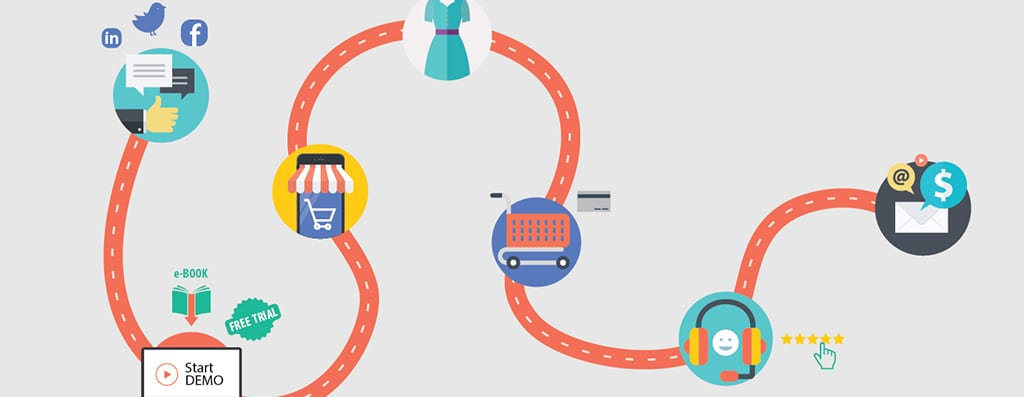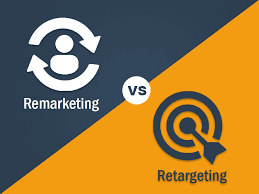This article will synopsize my overall philosophy on the customer journey.

By now, even if you’ve only been following me for a WEEK, you are VERY aware that I don’t EVER recommend direct selling on Facebook or Instagram as a first means of contact. Why WOULD I, when I know that we have the power to truly nurture an audience and consequently, build a real BRAND that is “Front and Center” for the people?
So let’s go ahead and take a deep dive into a subject that can very well determine your success as a Facebook and Social Media advertiser: RETARGETING.
So first, before we move on, let me provide you with a definition for the word RETARGETING from my “Facebook Marketing Ninja” Glossary:
“Retargeting – The action of putting a 2nd, 3rd, 4th or 5th message in front of the same exact individual. Retargeting can be based on many things: Website visitors, Facebook or Instagram video consumption, Messenger interaction, interaction with your Facebook page, and more.”
This is what we know… If you are communicating with the correct demographic, every instance of additional exposure and contact with that same individual dramatically increases the probability of conversion.
Mastering THIS very subject has been the biggest factor in my success across the board, so get ready to jump in, take notes and implement!

Okay; so now I will provide you with some more clarity on the difference between COLD and WARM traffic.
Let’s begin by creating some standards here: What do I consider “cold” traffic? What do I consider “warm”?
Cold Traffic – An audience that has never heard of your brand. People that are not a part of any of your retargeting audiences.
Warm Traffic – An audience that has SOME familiarity with your brand. This could be through previous ads, website visits or even organic posts on your page.
In my agency I have a very firm policy; I DO NOT SELL TO COLD TRAFFIC. EVER. I only sell once people have a familiarity with the brand, the message or the overall content. And Why would I — When it’s so incredibly affordable to put myself in front of people time and time again?
I know that for those of you who are not yet familiar with retargeting, the whole concept of it may seem like a longer path to travel, but DON’T LET THAT DECEIVE YOU. Retargeting, in this modern digital 📲 world 🌎, it’s the quickest path to a thriving business.
The History of Retargeting
So now, let’s take a moment to go over the history of retargeting and why today’s era gives you a different opportunity that 20th-century entrepreneurs WISHED they had…
There are 2 major terms used when it comes to placing additional marketing messages in front of a website visitor or a video watcher, a page fan or someone who messaged your page. These 2 terms are:
Retargeting and Remarketing.
Unfortunately, they can be used quite interchangeably by some, and as a result, some confusion exists when it comes to their definitions, when in fact they are NOT exactly the same. So just in case you’re confused like I once was, I’d like to describe a bit more about each.

The word Remarketing has been used for ages. Today, in the digital age, it is used more specifically in the email marketing 📧sense. Meaning, if a person provides their info, and you continue communicating with them through email, trying to nurture a relationship with them and win them as customers, you are REMARKETING.
The word Retargeting, on the other hand, has a much broader sense and is much more commonly used today. When you create ads based on website visits, videos watched on Facebook or Instagram, or when you create a Google AdWords campaign that targets your YouTube subscribers, you are RETARGETING.
I hope this makes the distinction between these 2 terms clearer for you now.
I just really wanted to clarify this in case it has ever come up for you in the past. For all intents and purposes, throughout my entire course (for those of you who are my students), as well as in my content (video, written, audio/podcasts) I have only referred to one term — and that term is RETARGETING. In fact, to make it even clearer, here’s a statement I want you to always keep in mind throughout this article:
RETARGETING equals BUILDING RELATIONSHIPS.
How can you build a business that truly withstands time? By BUILDING RELATIONSHIPS. Although very simple (but also quite expansive and profound), this statement is the foundation upon which everything I teach rests.
Okay, let’s jump into the meat and potatoes of this subject!
Ad Sequencing VS Retargeting on Facebook
Now, let’s talk about 2 very similar but distinct relationship-building campaigns: Ad Sequencing and Retargeting.
Let’s start off by defining each and giving you a quick overview of them.
Ad Sequencing – Sequencing is defined as: “Arranging something in a particular order.” Therefore Ad Sequencing would be: “Arranging ads in a particular order.”
When doing Ad Sequencing you are entering into a contract with Facebook. This is the way traditional advertising has been done for ages. When you want to do TV ads, you enter into an agreement. This can be a 6-month term, a 1-year term, etc. And the TV station promises the advertiser a certain amount of “Reach” in exchange for what the advertiser is paying. This is the same type of agreement you are getting into when you enter into an Ad Sequencing Reach and Frequency contract.
Here’s some data directly from Facebook regarding Ad Sequencing through Reach and Frequency:
“About Ad Sequencing:
“Reach and Frequency Buying has a sequencing tool that allows you to arrange up to 50 ads in a certain order to be shown to an audience. People in your target audience will have the opportunity to see ads in the order you set. For example, ad #1 will be delivered to them before ad #2 is delivered. It doesn’t allow you to control whether or not a person has to have engaged with the content you are showing in order to see the next ads in your sequence.
“Sequence your ads when you want to tell a story or present information to people in a specific order. For example: If you want to build a narrative with your ads, you can show one ad that tells the beginning of the story first and then show additional ads afterward that continue to tell the story in a set order. Your audience will see ad #1 before they see ad #2, and so on.
“Sequencing becomes available after you’ve uploaded your ad creative and reserved your Reach and Frequency Campaign.
“Use sequencing when:
- You want to reach a broader audience with several different ads that tell a story.
- You want to try different ways of engaging a broader audience.
- You want to tell a story about a brand.”
Alright, so that’s Ad Sequencing. On the other hand we have Retargeting, something very similar. With Retargeting you can also sequence your ads as described above, but you will have to do more manual work, which I cover below. Also, while with Retargeting there is no need to contract with Facebook, you also don’t have a guaranteed REACH. Your reach will instead be determined by the quality of your audience (how interested they are in your message) and your creative (the more the audience likes your content, the more reach you will get. That’s how the Facebook algorithm works).
Here’s a VERY important distinction between Ad Sequencing and Retargeting. With Retargeting you can additionally set it up to show a second message to someone who engaged with your first ad in a certain way. For example, you can set up your retargeting campaign to ONLY show to the people who saw at least 75% of your video.
This is NOT possible with Ad Sequencing. With Ad Sequencing there’s an audience. And that audience will be put in the sequence regardless of their engagement with the unique ads. So if someone saw a video for only 3 seconds, or if they kept on scrolling past your ad, they will still be shown the next message in that sequence. Do you see the difference? It’s a pretty big one since we are interested in building STRONGER RELATIONSHIPS with the VERY people who engage with your content.
Here’s what Facebook has to say in regards to Retargeting:
“ABOUT RETARGETING
“Retargeting, such as video engagement audiences, is similar to ad sequencing in that you can set up ads to run in a sequence, but it also allows you to show sequential ads to people ONLY after they’ve already seen your previous message or engaged with your content in a certain way. For example, ad 2 will only be delivered to people who saw ad 1 or engaged with it in a certain way.
“Use retargeting when:
- You’ve already reached a broad audience and want to narrow that audience down to only include people who have engaged with your content in the past.
- You want to identify and target people who have engaged with your content before and seem likely to take certain actions in the future, such as an online purchase or store visit.”
Do you see the power now? Retargeting on Facebook and THEN sequencing your messages is the SURE PATH to planting your roots in the online world.

Custom Audiences: What Are They and How to Create Them?
So now, we will review the 3 types of audiences on Facebook, and then I give you some step-by-step guidance on building custom audiences for your retargeting campaigns.
Let me first break down the different custom audiences you can build and what each of them mean:
Custom Audiences from your Customer List:
A Custom Audience from a customer list is a type of audience you can create, made up of your existing customers. You can target ads to the audience you’ve created on Facebook, Instagram, and Audience Network.
You upload, copy and paste, or import your hashed customer list, then we use the hashed data from it to match the people on your list to people on Facebook.
“Hashed data” defined: Hashed data maps the original string of characters to data of a fixed length. An algorithm generates the hashed data, which protects the security of the original text. In short, the purpose of hashing the data is to protect the user’s privacy. When you upload the data into Facebook, Facebook never actually OWNS or has ACCESS to the data. It is in other words, encrypted. There’s a system in the middle which ensures data is never compromised.
So if you were worried about the privacy of your customers, DON’T BE. That is what the hashing process is all about, and it all happens before the data is sent to Facebook.
Your customer list is hashed locally, on your browser, and then sent to Facebook. There, it’s matched against the existing list of our users’ hashed IDs and the matches are added to your Custom Audience.
Hashing turns the data in your customer list into short fingerprints which can’t be reversed. It happens before your data is sent to Facebook. Pretty cool right?
Custom Audiences from your Website:
Creating Custom Audiences from your website is a powerful way to reach existing customers and those who’ve shown interest in your business before.
Note: Website Custom Audiences has a 180-day window. Meaning, if someone visited your store 181 days ago and hasn’t visited your store since then, they will automatically fall off this custom audience. That’s one of the reasons you want to actively send people to your website. Doing this ensures this Website Custom Audience continues to grow consistently.
Engagement Custom Audiences:
An Engagement Custom Audience is a Custom Audience made up of people who have engaged with your content across the Facebook family of apps and services. This is where you can do a Video Watchers audience. That could be a 3 second, 10 second, 25%, 50%, 75% or 95% video watcher audience. You can build an audience of people who have messaged your page or have engaged with your page by liking your post or your ads. You can even create an audience of people who have clicked on call to actions on your ads!
A quick note on Engagement custom audiences: You only have access to the last 365 days of engagement. If someone interacted with your page 366 days ago, and hasn’t engaged since, these people will fall off this audience.
Lookalike Audiences:
Facebook’s Lookalike Audiences help your ads reach people who are similar to (or “look like”) those audiences already interested in your business. We have talked about this previously and by now, you should fully understand the power of the LookAlike Audience. When you find a winning audience, this is how you scale. You have to consistently create LookAlikes of your winning audiences. By doing this, Facebook will continue helping you find people interested in your brand.
There you have it. It’s time to implement and get all these custom audiences created. They will be a big factor in your Facebook Ads game!
TO BE CONTINUED…




